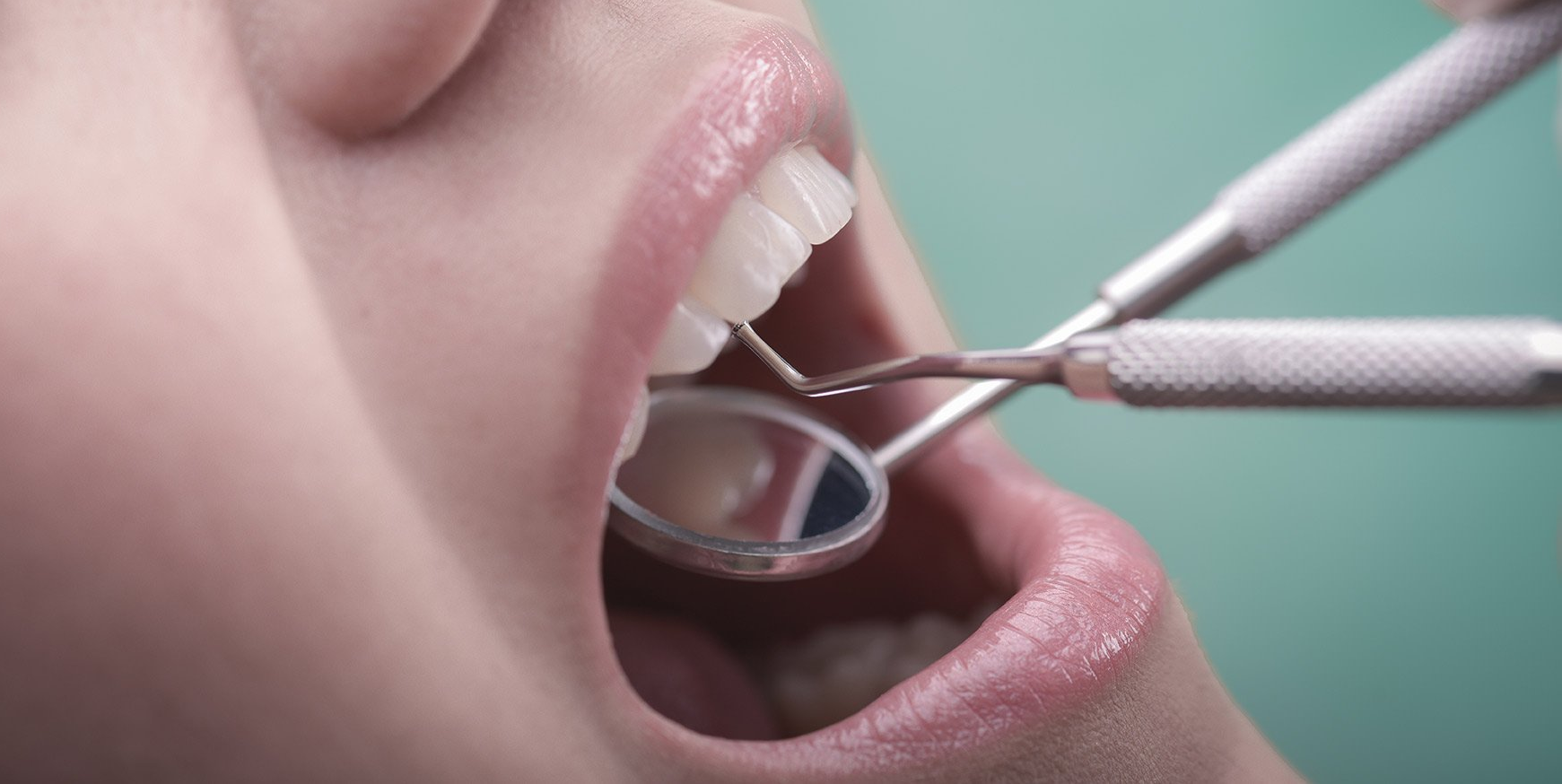
Most people regard the sound of the dental drill with dread, but no one can deny that it has played a crucial part in the maintenance of oral health. That still doesn't change the fact that most people would like to hear less of it, or not hear it at all.
Modern dentistry is making great strides towards turning this into a reality. With the help of scientific research, new technology and new materials, dentists can diagnose disease earlier, stop dental caries (tooth decay) before it starts and even reverse it in its earliest stages. In fact, it can be treated by removing a minimum of natural enamel or dentin. We call this Minimally Invasive Dentistry (MID).
The goal of MID or micro-dentistry is to conserve healthy tooth structure by detecting, diagnosing, intercepting, and treating dental caries at the microscopic level. A focus on less invasive procedures also often means no pain, less anxiety and less cost.
Dr. Brar and his team take pride in providing a comfortable dental experience. Contact us today to learn more and to schedule your convenient appointment!

Children typically receive fluoride applications after a professional cleaning. Your Salisbury family dentist can offer these applications in the form of a gel, foam, or varnish. Varnishes are painted onto the teeth, foams are administered in a tray (similar to a mouth guard), and gels can either be painted or applied via a tray. All of these provide a temporary and high dose of fluoride. Sometimes, children can accidentally swallow some of the fluoride agent being used and there have been reports of sickness, vomiting, headache and stomach pain as a result. These are the main risks associated with topical fluorides, but since they are administered professionally, they are easy to avoid.
An expert panel from the American Dental Association (ADA), recommends that children at a high risk for decay should receive a 2.26 percent fluoride varnish or 1.23 percent fluoride gel, or a prescription-strength, home-use 0.5 percent fluoride gel or paste or 0.09 percent fluoride mouthrinse. These recommendations are for children who are six or older and only 2.26 percent fluoride varnish is recommended for children younger than 6 years.
The ADA panel also found that the benefits outweigh any potential harm from fluoride applications for all age groups except for children younger than 6 years. In these children, the risk of experiencing adverse events associated with swallowing professionally applied topical fluoride agents outweighed the potential benefits of using all of them except for 2.26 percent fluoride varnish. Following a fluoride foam or gel application, your child should be cautioned not to eat for 30 minutes. Following a varnish application, your child may eat or drink immediately since the varnish sticks to the teeth and is released into the enamel over a longer period of time.
How Fluoride Works
Fluoride plays a key role in making teeth more resistant to tooth decay, not only developing teeth, but also after they have erupted into the mouth. Tooth enamel is comprised of calcium and phosphate minerals, in a highly crystalline form called hydroxyapatite. Fluoride gets incorporated into the enamel structure replacing hydroxyapatite as fluorapatite, which is stronger and more resistant to acid attack. Fluoride applied topically, in toothpastes and gels for example, can also help reverse early decay by aiding "re-mineralization" — adding mineral back into tooth surfaces damaged by acid attack.

Removable partial dentures are typically, and more appropriately, named temporary or transitional partial dentures and they are certainly not the best design for long term use. The name “flipper” comes from the tongue's ability to flip them out or move them around. About the best use for these transitional appliances is as a temporary measure during healing, periodontal therapy, implant placement or like treatments.
Decades of research shows that partial denture wearers typically suffer more decay and gum disease than non-partial denture wearers, with all other variables being equal. The primary reason is that partial dentures attach to the remaining teeth and other structures, the gum ridge areas where teeth once were, and the palate on which they rely for retention (to keep them in your mouth). Their attachment to other teeth can cause more bacterial plaque than usual, which leads to an increased incidence of both gum disease and tooth decay. Because partial dentures attach to the remaining teeth they also tend to loosen the attached teeth over time.
On the positive side, a well-constructed, accurately fitting thin metal-based removable partial denture can provide a wonderful aesthetic and functional service. This is a big point that can't be stressed enough — excellent daily oral hygiene (brushing, flossing and the use of fluoride toothpaste, supplemented by mouth rinses), regular dental check ups and scrupulous care of the partial denture (leaving it out at night and cleaning it thoroughly) are all pre-requisites for successful partial dentures.
While partial dentures are less expensive than implantsor bridgework, which are fixed, non-removable alternatives, these latter options, particularly implants, are currently the treatment of choice for permanent tooth replacement. If you are considering tooth replacement in Salisbury, Maryland, please contact our experienced dental team to discuss which option is best for you. We offer partial dentures, full dentures, implants and dental bridges in-house that will help restore your smile and allow you to chew and smile with confidence.

Peninsula Dental Center offers teeth whitening in Salisbury, Maryland. Bleaching trays and other systems try to whiten your natural teeth instead of whitening with restorative materials like veneers and crowns, which require removal of some of the tooth structure. Bleaching has proven to be a very effective method that involves less time and expense than restorative dental treatment.
While bleaching can dramatically improve your smile, there are some potential side effects such as tooth sensitivity and irritation of the gums that may occur. These conditions are generally temporary with extremely rare reports of irreversible damage. Tooth sensitivity tends to appear earlier in treatment. When using the stronger professionally applied agents your dentist in Salisbury will often isolate your gums so that they will not become irritated.
When considering this technique, be aware of the following:
- Bleaching is not a permanent solution: the effects will diminish over time. Optimally, this period lasts six months to a year — referred to by dentists as the “fade rate.”
- Although fading is inevitable, it is possible to slow down the process by avoiding foods and habits that cause staining. Some patients may need a tooth-whitening “touch-up” with the home bleaching technique for 1-2 days, once or twice a year.
- Acceptable color matching can be difficult to achieve due to the mix of natural teeth with pre-existing crowns, bridgework or fillings. Your dentist in Salisbury can sometimes improve the color match by adjusting the concentration of the bleaching gel, as well as the actual contact time on the teeth.
While many over-the-counter whitening products produce successful results, patients should still seek a professional consultation before teeth whitening in Salisbury. Your Salisbury dentistcan discuss your cosmetic needs and review with you all the risks, benefits and alternatives to bleaching.
Contact ustoday to schedule your comfortable and convenient dental appointment to discuss your teeth whitening options.

Most people regard the sound of the dental drill with dread, but no one can deny that it has played a crucial part in the maintenance of oral health. That still doesn't change the fact that most people would like to hear less of it, or not hear it at all.
Modern dentistry is making great strides towards turning this into a reality. With the help of scientific research, new technology and new materials, dentists can diagnose disease earlier, stop dental caries (tooth decay) before it starts and even reverse it in its earliest stages. In fact, it can be treated by removing a minimum of natural enamel or dentin. We call this Minimally Invasive Dentistry (MID).
The goal of MID or micro-dentistry is to conserve healthy tooth structure by detecting, diagnosing, intercepting, and treating dental caries at the microscopic level. A focus on less invasive procedures also often means no pain, less anxiety and less cost.
Dr. Brar and his team take pride in providing a comfortable dental experience. Contact us today to learn more and to schedule your convenient appointment!

Children typically receive fluoride applications after a professional cleaning. Your Salisbury family dentist can offer these applications in the form of a gel, foam, or varnish. Varnishes are painted onto the teeth, foams are administered in a tray (similar to a mouth guard), and gels can either be painted or applied via a tray. All of these provide a temporary and high dose of fluoride. Sometimes, children can accidentally swallow some of the fluoride agent being used and there have been reports of sickness, vomiting, headache and stomach pain as a result. These are the main risks associated with topical fluorides, but since they are administered professionally, they are easy to avoid.
An expert panel from the American Dental Association (ADA), recommends that children at a high risk for decay should receive a 2.26 percent fluoride varnish or 1.23 percent fluoride gel, or a prescription-strength, home-use 0.5 percent fluoride gel or paste or 0.09 percent fluoride mouthrinse. These recommendations are for children who are six or older and only 2.26 percent fluoride varnish is recommended for children younger than 6 years.
The ADA panel also found that the benefits outweigh any potential harm from fluoride applications for all age groups except for children younger than 6 years. In these children, the risk of experiencing adverse events associated with swallowing professionally applied topical fluoride agents outweighed the potential benefits of using all of them except for 2.26 percent fluoride varnish. Following a fluoride foam or gel application, your child should be cautioned not to eat for 30 minutes. Following a varnish application, your child may eat or drink immediately since the varnish sticks to the teeth and is released into the enamel over a longer period of time.
How Fluoride Works
Fluoride plays a key role in making teeth more resistant to tooth decay, not only developing teeth, but also after they have erupted into the mouth. Tooth enamel is comprised of calcium and phosphate minerals, in a highly crystalline form called hydroxyapatite. Fluoride gets incorporated into the enamel structure replacing hydroxyapatite as fluorapatite, which is stronger and more resistant to acid attack. Fluoride applied topically, in toothpastes and gels for example, can also help reverse early decay by aiding "re-mineralization" — adding mineral back into tooth surfaces damaged by acid attack.

Removable partial dentures are typically, and more appropriately, named temporary or transitional partial dentures and they are certainly not the best design for long term use. The name “flipper” comes from the tongue's ability to flip them out or move them around. About the best use for these transitional appliances is as a temporary measure during healing, periodontal therapy, implant placement or like treatments.
Decades of research shows that partial denture wearers typically suffer more decay and gum disease than non-partial denture wearers, with all other variables being equal. The primary reason is that partial dentures attach to the remaining teeth and other structures, the gum ridge areas where teeth once were, and the palate on which they rely for retention (to keep them in your mouth). Their attachment to other teeth can cause more bacterial plaque than usual, which leads to an increased incidence of both gum disease and tooth decay. Because partial dentures attach to the remaining teeth they also tend to loosen the attached teeth over time.
On the positive side, a well-constructed, accurately fitting thin metal-based removable partial denture can provide a wonderful aesthetic and functional service. This is a big point that can't be stressed enough — excellent daily oral hygiene (brushing, flossing and the use of fluoride toothpaste, supplemented by mouth rinses), regular dental check ups and scrupulous care of the partial denture (leaving it out at night and cleaning it thoroughly) are all pre-requisites for successful partial dentures.
While partial dentures are less expensive than implantsor bridgework, which are fixed, non-removable alternatives, these latter options, particularly implants, are currently the treatment of choice for permanent tooth replacement. If you are considering tooth replacement in Salisbury, Maryland, please contact our experienced dental team to discuss which option is best for you. We offer partial dentures, full dentures, implants and dental bridges in-house that will help restore your smile and allow you to chew and smile with confidence.

